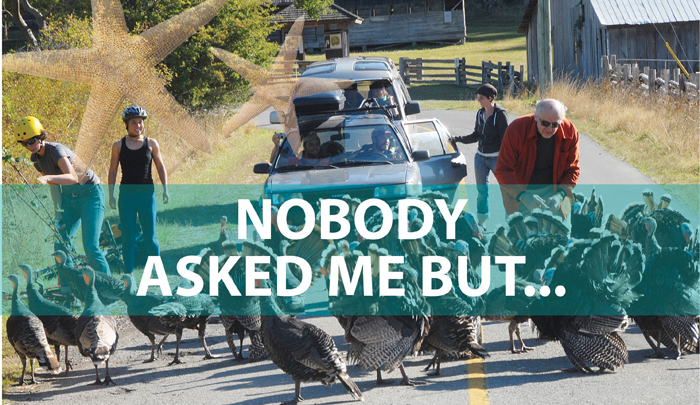When was the last time you checked your sourdough starter?
Had you been asked this question a couple of years ago, you would have answered with “say what?” However, in these days of COVID, it’s very likely that you could give the exact day and time you last took a peek to see if your magic baking potion was bubbling away towards fermentation.
Yes, for many of us, the hobbies and activities that are occupying our time at home have taken a sharp U-turn since the pandemic forced us into these restrictive bubbles. Gone are the book club dinners and beer nights with the boys. Likewise for your ballroom dancing classes and spin cycles at the gym.
Instead, you’ve been filling the time learning how to knit socks, crocheting hacky sacks, petit point needlework embroidering wall hangings with pithy aphorisms such as “There’s No Place Like Home,” hooking carpets you will never complete, or preparing to plant a garden that will rival the ones grown at Findhorn in Scotland.
Most likely, however, you’ve been baking bread. And not just any ordinary loaf, but the kind of bread that is kicking the yeast out of all other competitors. Sourdough.
Now, in order to bake sourdough bread, you need a little fermented mixture of something called sourdough starter. This is not a new-fangled invention. It’s been around for over 5,000 years and dates back to the Bronze Age. Archaeological digs have found traces of the good stuff alongside shards of clay pottery in what is considered the cradle of agriculture, Mesopotamia.
The sourdough starter was valued and passed on from generation to generation and from one civilization to the next. Later, in about 1500 BC, the ancient Egyptians improved the quality of the starter by allowing it to absorb some of the wild yeast particles floating around in the air from the beer they were notably good at brewing. Legend has it that pharaohs were buried in elaborate tombs along with their most prized slaves, their favourite cats, and their precious sourdough starter. Some archaeologists have even made the case that the starter was used in the embalming fluid to mummify the departed noble class before they were wrapped up and placed inside the pyramids.
As the centuries passed, families began to guard their sourdough starters as they would any valued inherited heirloom. Clandestine societies, complete with secret handshakes that recreated the motion of the kneading of dough, were formed to protect the ancient recipes. Even the Freemasons got into the act by storing away their precious sourdough starter in glass jars which came to be known later as “freemason jars.”
Eventually, sourdough starter made its way to North America and played a major role during the Gold Rush days in California and in the Klondike. Besides its use as a leavening agent in baking bread, the starter was also useful for tanning animal hides. In 1849, Isidore Boudin opened a bakery in San Francisco that supplied gold prospectors with both sourdough bread and starter (called the “mother dough”), which would enable them to bake bread when they weren’t panning for nuggets. A few decades later, Isadore’s widow, Louise, risked her life by grabbing a bucket of the mother dough before escaping from the bakery during the Great San Francisco earthquake of 1906.
What exactly is sourdough starter? Different recipes vary, but the basic ingredients include ground-up grain, mixed with a liquid (usually water or milk) and left at room temperature in the open air so that any wild yeast will settle into the mix. Mashed-up potatoes and sugar can be included as options that will affect the fermentation process and slightly alter the bread’s flavour.
A chemical reaction occurs as the yeast consumes the natural sugars to produce a variety of acids, alcohol and carbon dioxide. It is the carbon dioxide gas which causes the bread to rise as the little bubbles that are trapped in the dough give the loaf the holes in its structure.
Similar to many other fermented concoctions, sourdough starter can be used to create many other menu items besides bread. Fry the batter and then sprinkle it with jam or sugar and you’ve got yourself sourdoughboys. Wrap it in grape leaves and bake it in the oven to produce delicious Greek sourdoughlmades.
Nobody knows for certain when sourdough starter first made it here to Salt Spring. Some claim it was smuggled over from the Loch Lomond region in Scotland by the early settlers who mistakenly assumed it was a particularly potent form of haggis. Others argue that it came here much earlier over the land bridge that connected Siberia to North America. It was passed from one Indigenous nation to another until it worked its way across Sansum Narrows where it was traded for eagle feathers soaked in fermented skunk cabbage juice.
Our research department, which is located in the archives hidden deep within the bowels of the catacombs found beneath the Driftwood office in the former Valcourt Centre, has dug up a third possible origin for sourdough starter here on the island. What has been uncovered is scientific evidence that the sourdough starter is a natural chemical phenomenon brought about by the perfect storm which allowed local wild barley to mix with bull kelp in the presence of the salty waters of the natural spring our island was named after. With a little time and fermenting luck, the result has been nothing less than spectacular.
Nobody asked me, but it doesn’t look like this COVID pandemic is going to fizzle out any time soon. Normal, whatever that means anymore, still seems like it’s a long way away. Until we see signs that show us otherwise, let’s make like sourdough starter and keep bubbling on.

